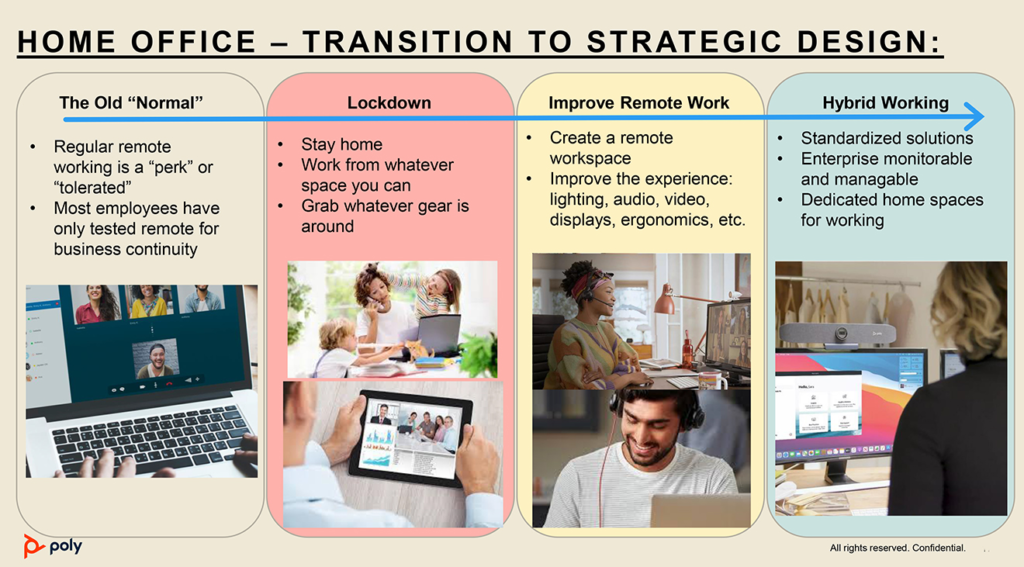With powerful collaboration tools like Avaya Spaces and Microsoft Teams, the enterprise communication landscape continues to evolve. Today, a key focus is improving the quality of the user experience (UX) in both remote and in-person settings.
“Effective team collaboration is based on seamless workflows between home and office,” said David Danto, director, UC Strategy & Research, Poly, in a recent Enterprise Connect Virtual session, “Enterprise Collaboration: A Whole New World.”
In his talk, Danto outlined the transitions between the “old” and “new normal” for team collaboration. “Unified communications (UC) actually dates back to the 1990s, and technology providers have been refining and improving the quality and reliability for remote workers since then,” he said. “However, prior to the pandemic, remote work was considered a perk – something that was only important for business continuity.”

When COVID-19 put the global economy into lockdown last March, enterprises scrambled to implement work-from-home strategies, and team collaboration had to be supported by whatever devices were readily available for employees. Since then, enterprises have recognized the need to improve remote collaboration, including offering new lighting, displays, and audio and visual upgrades for home offices.
Now, the future of team collaboration involves deploying hybrid workspaces, including redesigning traditional offices and creating dedicated home spaces for working. Ensuring adequate bandwidth for all team members is another consideration.
“For the first time since the introduction of unified communications, remote and hybrid working has become an enterprise strategy for the majority of organization,” said Danto. “As people no longer have to commute to an office to do individual work, the very nature of the office as a space for such work will permanently change. Offices will thrive using smaller footprints that are primarily for group work, including brainstorming sessions and employee celebrations.”
With teams working from a variety of locations, the accepted office balance of 30 percent meeting rooms and 70 percent workstations will flip, said Danto. In addition, collaboration technology will need to be considered much earlier in the office design process.
For instance, every meeting room will need to be equipped with modern collaboration endpoints that have AI and machine learning supporting production rules, added Danto. “The equipment will be smart enough so that users may never need to touch the controls,” he said.
A hybrid approach to team collaboration can improve the user experience, while delivering financial benefits to the enterprise, Danto said. For instance, some team members will be more productive working from home, while others prefer coming into the office during the workweek. “Employees who are empowered to set their own schedules can have a better work-life balance,” he said. Happier employees can deliver better customer service, along with generating ideas to improve the organization’s performance.
For enterprises, a hybrid collaboration strategy can lead to tremendous potential savings in real estate costs and less business-related travel, as well as environmental benefits such as reduced carbon emissions.
“Remote working is here to stay, and we can’t put the genie back in the bottle,” said Danto. “So enterprises need to look at collaboration from a hybrid standpoint, and nurture those peer-to-peer relationships among team members, regardless of location.”
